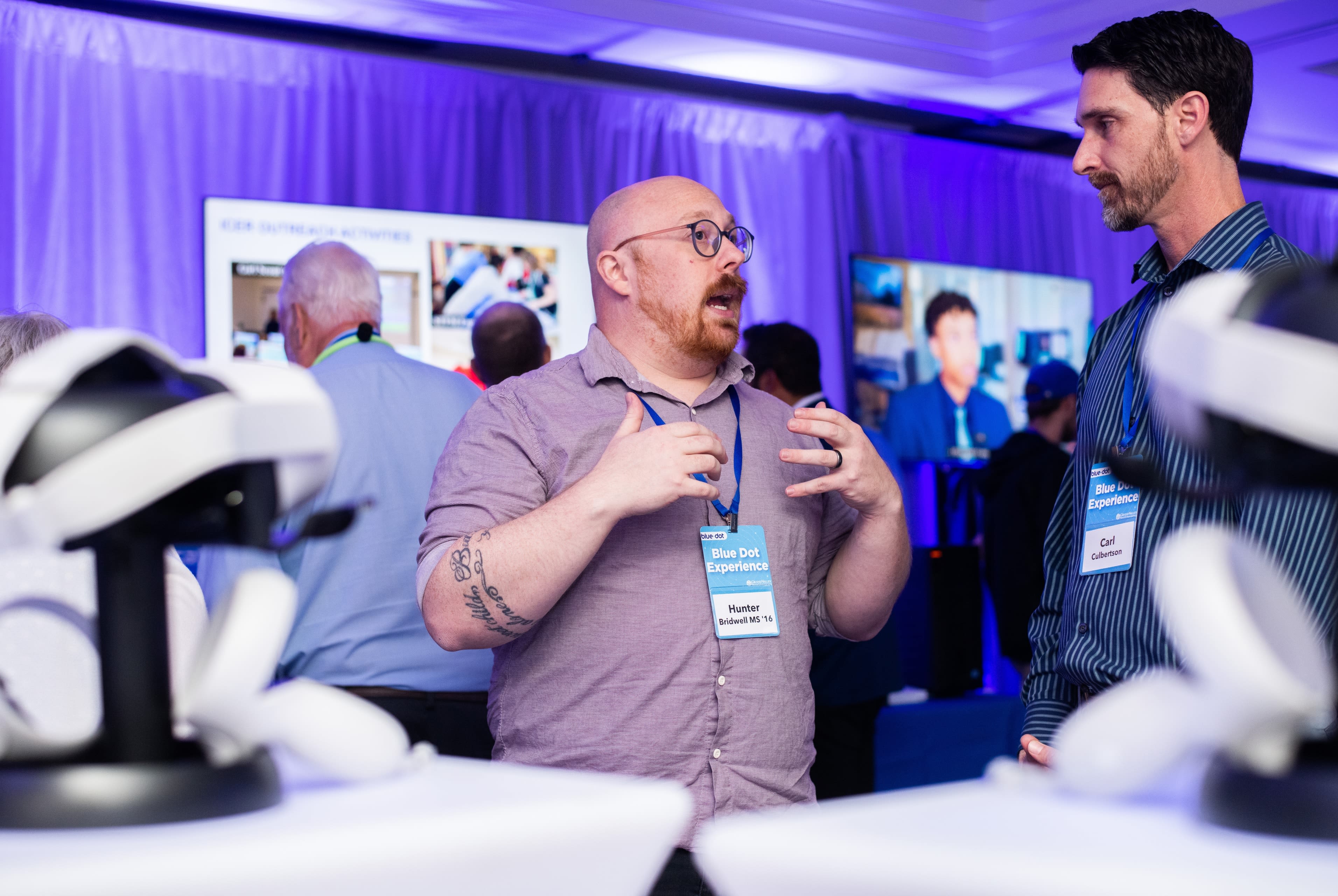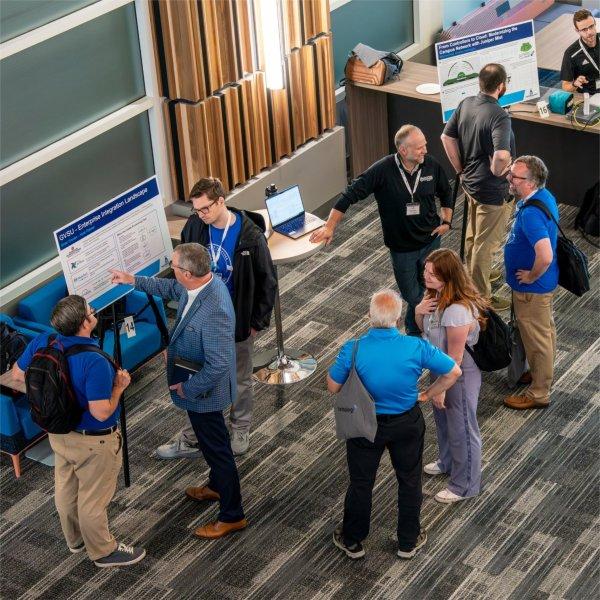Learning through Virtual Reality
How Grand Valley prepares students for careers after commencement
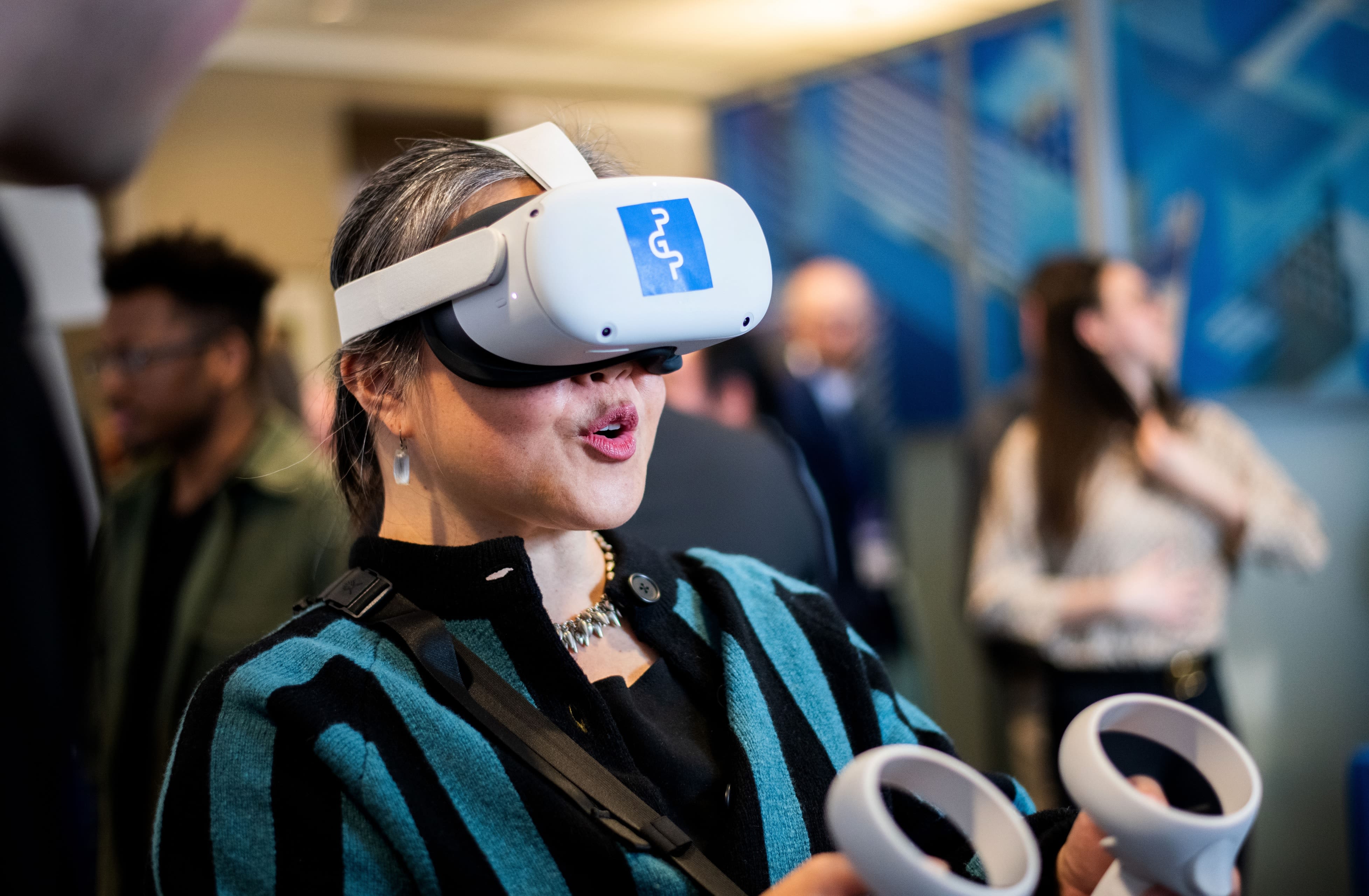
The GVSU Information Technology’s Innovation and Research team is helping to prepare students for their careers after graduation using virtual reality. The team is designed to help fill gaps in student learning by building relationships with different departments around campus.
“I have always been passionate about teaching and learning technology and the intersection they are in to really advance student learning as well as make faculty more efficient in their teaching,” Eric Kunnen, senior director of IT Innovation + Research.
Kunnen has worked at Grand Valley for over 12 years, helping the university modernize and be more responsive to workforce needs. VR is one way for students to explore aspects of their potential careers before they enter the workforce.
“It has a great balance of what I call splash and substance,” said Hunter Bridwell, emerging technologies coordinator.
In his terms, splash refers to the design and appeal and the substance holds the potential for learning.
“We are trying to lengthen that on-ramp in a safe place where there are no consequences," said Bridwell.
Hunter Bridwell, emerging technologies coordinator, showcases 'The Blue Dot Experience' event during 2024's Tech Week GR. photo by Kendra Stanley-Mills
Hunter Bridwell, emerging technologies coordinator, showcases 'The Blue Dot Experience' event during 2024's Tech Week GR. photo by Kendra Stanley-Mills
Ty Rizer, emerging technologies developer, helps bring faculty ideas to life by creating classroom aides in VR.
“We are not replacing the content because we can use the capabilities that are specific to hardware and software that align with course objectives to augment programs,” Ty Rizer, emerging technologies developer.
Seidman College of Business
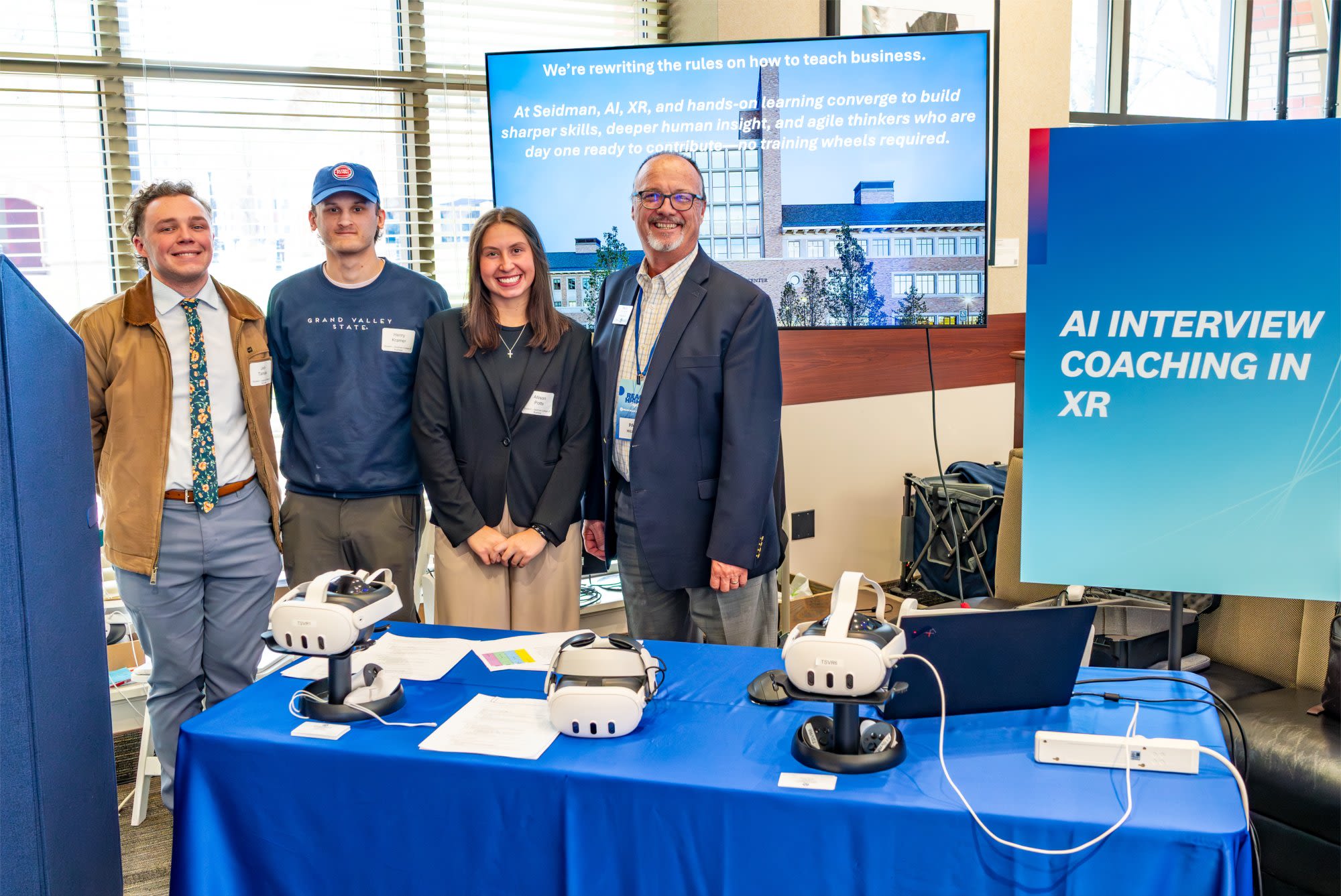
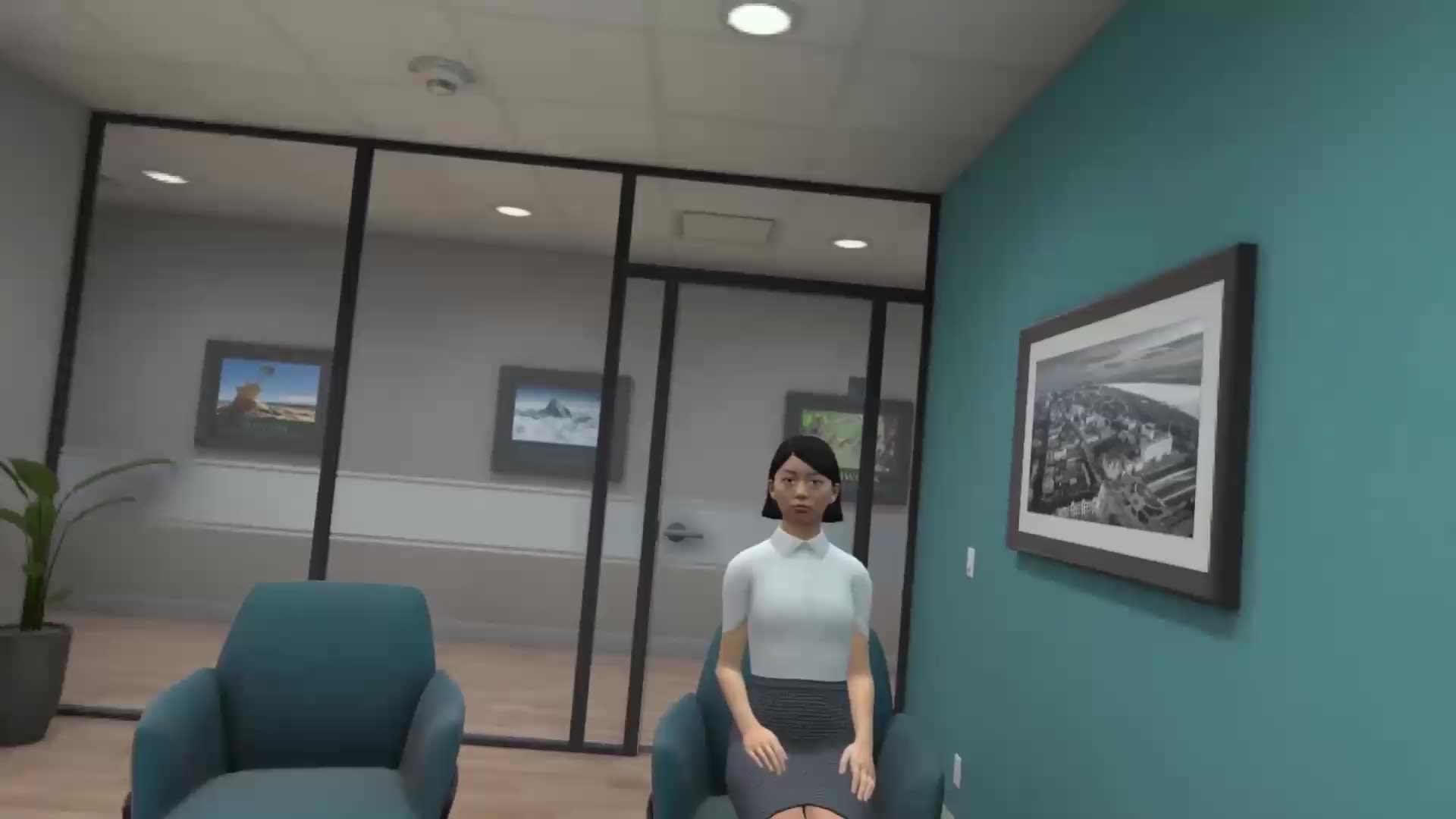
The Seidman College of Business is using virtual reality to help prepare students for job interviews. Paul Hillman, affiliate faculty of management, is working to integrate the use of virtual reality into his courses.
“Right now, in the School of Business, we want to create marketable skills,” said Hillman.
One of his main assignments is to simulate a final interview as an applicant applying for a company. He has all 104 students visit the Steelcase Library, in the DeVos Center, to check out a headset for the assignment. The headsets are loaded with Ovation VR Software that can help students practice speeches, interviews, elevator pitches, foreign languages and debates. The AI integration helps faculty import customized scripts and turn it into fluid conversation.
“Most of them fail miserably because they don’t realize that you don’t get two first interviews, you have to get it right the first time. They finally feel that tension of a first interview and that, to me, is incredibly powerful,” Paul Hillman, affiliate faculty of management.
The simulation gives the opportunity for students to fail in a controlled environment rather than at a real job interview. The AI will provide notes so that the students can be better prepared for next time.
Hillman has also explored Horizon Work Rooms, a software that allows people to conduct virtual meetings. You can connect with people from anywhere, just like a Zoom meeting, and talk with experts in a more immersive environment. He has used it in his Management 331 class to compare the engagement of meetings conducted in-person, over Zoom, and in a VR headset.
“When you are sitting in a virtual room, like this, it feels very much like you are there,” said Hillman.
Hillman said he believes that VR will not replace a professor but it can assist, being an extension of the professor.
Interprofessional Simulation Center
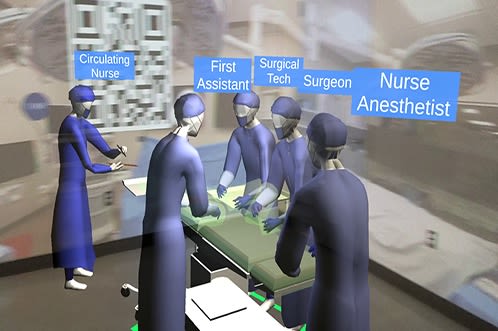
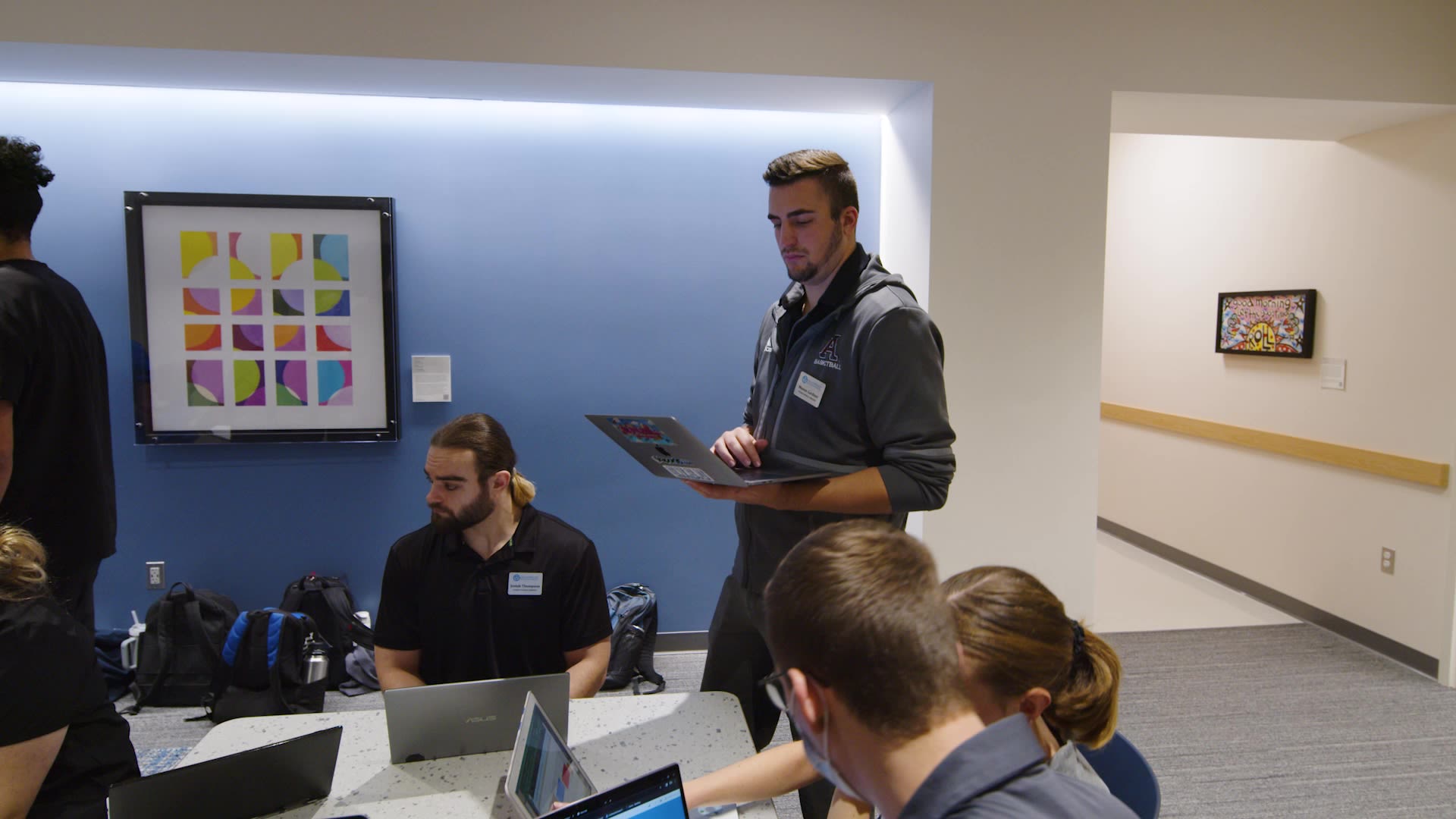
Over on the Health Campus, faculty are making use of the Simulation Center to create more opportunities for practice application of student learning. Nursing and health professions students have very limited opportunities to practice in a real operating room. This simulation provides extra time for students to explore an operating room in a virtual environment.
“Simulation is all about providing students with psychological safety. Are you feeling safe when you enter the workforce?” Rizer said.
Rizer has worked with faculty to create the Sterile Field Visualizer for a Microsoft HoloLens 2. Students are shown a hologram of an operating table and can freely interact with the space.
“These new technologies, like virtual reality and artificial intelligence, allow us to give students that sense of being somewhere or working with someone who they might not typically have access to,” said Rizer.
VR can also be used to enhance an existing experience. Rizer designed the Nutritional Simulation to save time and materials. Previously, faculty spent a lot of money bringing in real food for this demonstration but VR has allowed them to save the money and give students more time with the material.
“A lot of students have reported that they have enjoyed the experience because it gives them the chance to take as much time as they need in a situation,” said Rizer.
Legal Studies
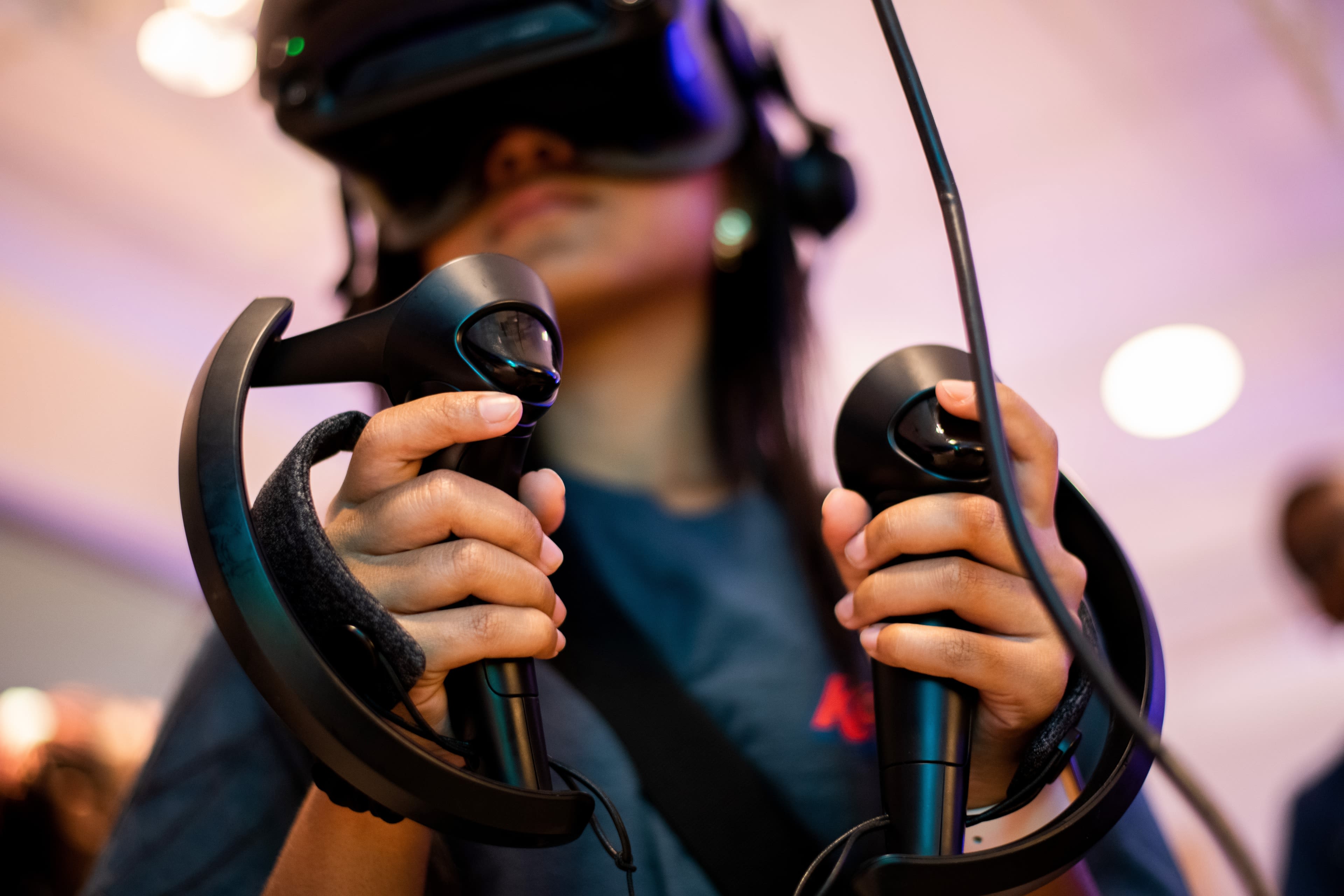
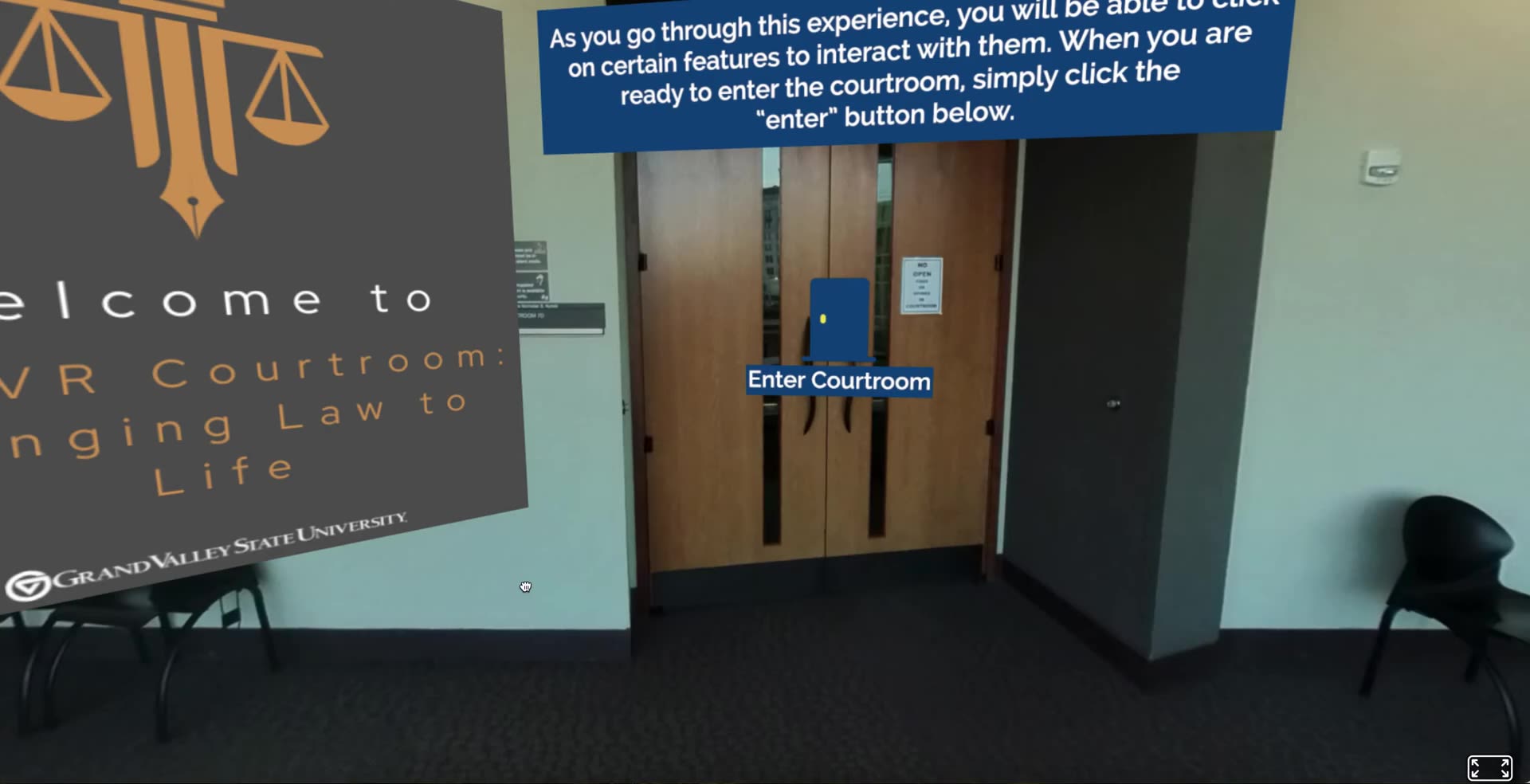
The Legal Studies Program is using virtual reality to explore legal environments, like courtrooms, law firms and crime scenes. With help from the Immersive Technologies team, Legal Studies faculty Courtney Topić, Adrian Copeland and Joshua Sheffer prepared a 360-degree courtroom tour to have students explore the layout, roles and restricted areas of a courtroom. This tour is geared towards introductory classes, but Topić has also found it useful in some of her upper-level classes.
“We are developing different VR content for students with the purpose of giving them an immersive learning experience and the ability to interact with an environment they might not have yet experienced,” said Topić.
Virtual reality allows students to dive deeper into a topic that students have already covered in class. Since the simulation is done in class, students can ask questions and guide conversations.
Legal studies student Kennedy Brandow said: “At first, I was skeptical to be standing in front of a bunch of people looking like an idiot, but it was so much fun! Everyone seemed to enjoy it, my group was very supportive. It was exciting for me to be able to practice standing in a courtroom, with people I was comfortable around. I loved it.”
After the first run of the courtroom tour, students wanted more VR experiences. The Innovation and Research team is working to help create a law firm tour and a crime scene simulation.
“The goal, for me, is for the students to be able to issue-spot in an immersive fact pattern then, based on their VR session, students can conduct legal research on applicable home invasion laws,” said Topić.
The idea is to bring their textbooks to life and create a touch point of comfort for when they get out of school. Topić has also found that the simulations are a more engaging way for the students to weave in class concepts.
“It has made my learning far more effective,” said student Gabriella Mainhardt. “I was more engaged during this experience than other methods of learning. It connected all of the pieces I had learned in class by putting them in real life. I performed better on my exam that followed the VR activity than I had in past exams in my particular course.”
Moving forward
The Innovation and Research team is working to provide students with as much immersive technology as possible before they graduate
“I am really proud of the team. We are all passionate about the success of students and the new opportunity that these technologies bring to faculty,” said Eric Kunnen.
He said the team hopes more departments across campus will reach out and explore different ways virtual reality can be used in their courses.
“We are interested in expanding who uses simulation at Grand Valley,” said Rizer.
“What we don’t want is ideas to die on the vine. We really like to see ideas flourish,” said Kunnen.







